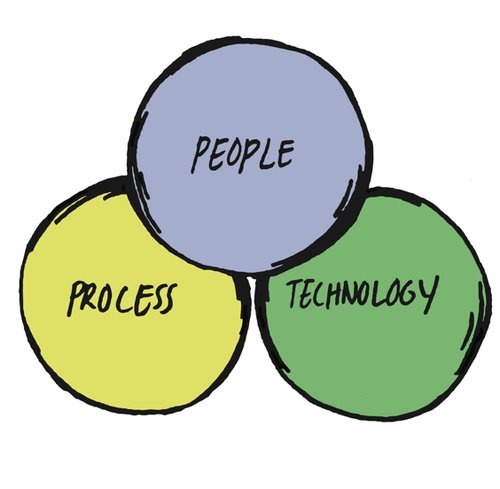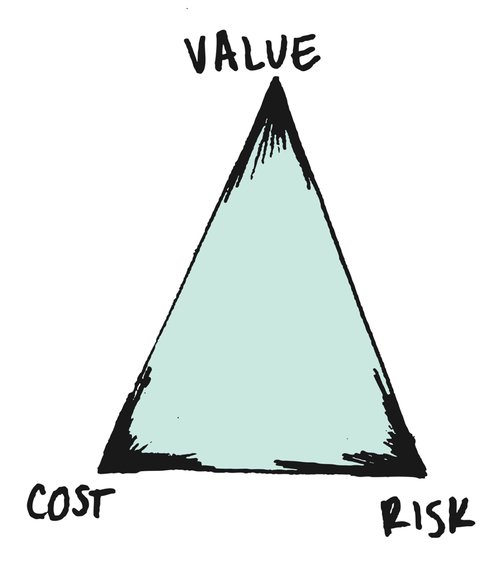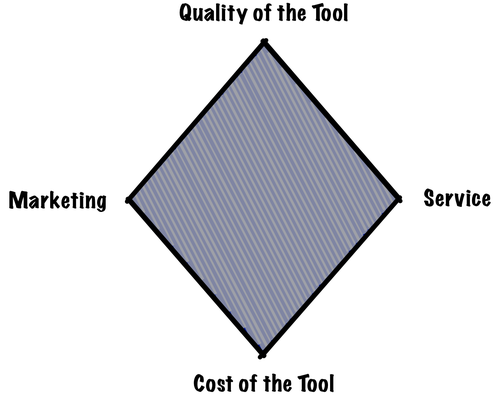Mission
I sincerely want to help you. That means I will do everything in my power to solve problems and help you take advantage of the opportunities that lay before you.
Although my background is in information technology, my contribution is rarely a technology-only solution. Sometimes it doesn't involve technology at all. I "get" business because I live it every day through consulting with clients, and in my own endeavors.
My holistic approach to business solutions is unique, and is the direct result of the last 15 or so years. There are many problems you cannot solve with technology, though many firms are happy to try as long as they are paid to do so. This is cost-productive for the client and never ends well.
I don't want to provide you with just any solution -- I want to provide you with the solution, and I do this through the expert analysis and development of people, processes, and technologies.
People

Many organizations pay lip service to the importance of people, yet deal with woes in recruitment and employee turnover. When I say people, this means the right people in the right positions. To accomplish this you need:
- Strategy: A talent management strategy forms the basis for organizing people around your most important goals. A solid talent management strategy will help you make deliberate choices based on organizational strategy, succession plans, and key positions.
- Recruitment: Whether you are looking internally or searching the job market, finding the right people is the basis for a sustainable organization.
- Placement: Placing the right people in the right positions ensures the best possible outcomes for both the business and its employees. Search for the best talent within, and overcome challenges with the employee on-boarding process.
- Assessment: Rise above tedious, subjective and ineffective performance evaluations to create dynamic, objective staffing assessments that measure what's important to your business.
- Development: Assessments provide the basis for continuous professional development in the areas that will have a real impact on the capability and contribution of your staff and your organization's mission.
- Reward: Reduce the cost of turnover and ensure that everyone is fairly rewarded for their contribution, protecting the bottom line while improving retention.
- Exit: Employees may exit an organization for a variety of reasons. A structured and deliberate approach to the termination of employment helps improve the organization and protect both it and employees.
Processes

A process may be defined as a structured set of activities. Whether they are documented or not, processes are everywhere. They are the warp and woof of all activities conducted within a business.
All processes have:
- A starting point (trigger).
- Zero or more inputs -- things required to complete the process.
- One or more specific steps that are taken to do the work.
- One or more outputs -- the results or outcomes that form the reason for the process.
While all aspects of a process are important, the value of the process is in the results or outcomes. In fact, when providing products or services, processes are how the value is actually delivered.
Additionally, well-documented processes help an organization manage the costs and risks of creating and delivering value to customers.
Examples of processes include:
- Incident Management: Handling unexpected interruptions or degradations of service.
- Marketing a Product: The steps involved in establishing the positioning and executing the proper promotion to put a product in front of the correct audience.
- Request Fulfillment: Fulfill a standard request for service, such as answering a customer question or filling an order.
- Talent Management: A collection of processes related to managing employees.
Technologies

Technology is exciting, but in the end it's is just a tool. A tool makes something easier or more cost-effective to accomplish.
As with processes, the value of a tool is in the results or outcomes it provides. Picking the "right tool for the job" is perhaps a tired, but apt, expression when evaluating tools for use in business. The choices, especially in high tech and software, are overwhelming.
We can better evaluate tools by understanding their composition, expressed in terms of:
- Quality: The utility and warranty of the tool. Utility is what the tool does, and warranty is how well the tool does it. The evaluation of warranty will depend upon the type of tool. Additionally, the importance of warranty often depends upon the utility.
- Cost: The cost of a tool, often compared to it's quality. Higher quality does not always equal higher cost, and lower cost does not always equal lower quality. In general, however, "you get what you pay for".
- Service: The support for a tool, especially after purchase, may be important depending on the tool in question. It may also depend upon the people that will operate the tool.
- Marketing: Without marketing, a tool may never reach the hands of those that would benefit from its use. Poor marketing may also ensure that a tool won't be available in the future.
Of the four considerations, only three are useful for the purpose of evaluation. Marketing, while important, is to be (mostly) ignored because it has no impact on the value -- the results or outcomes -- of using the tool.
Conclusion
If you've taken the time to read my mission, why not drop me a line or schedule a time to talk?